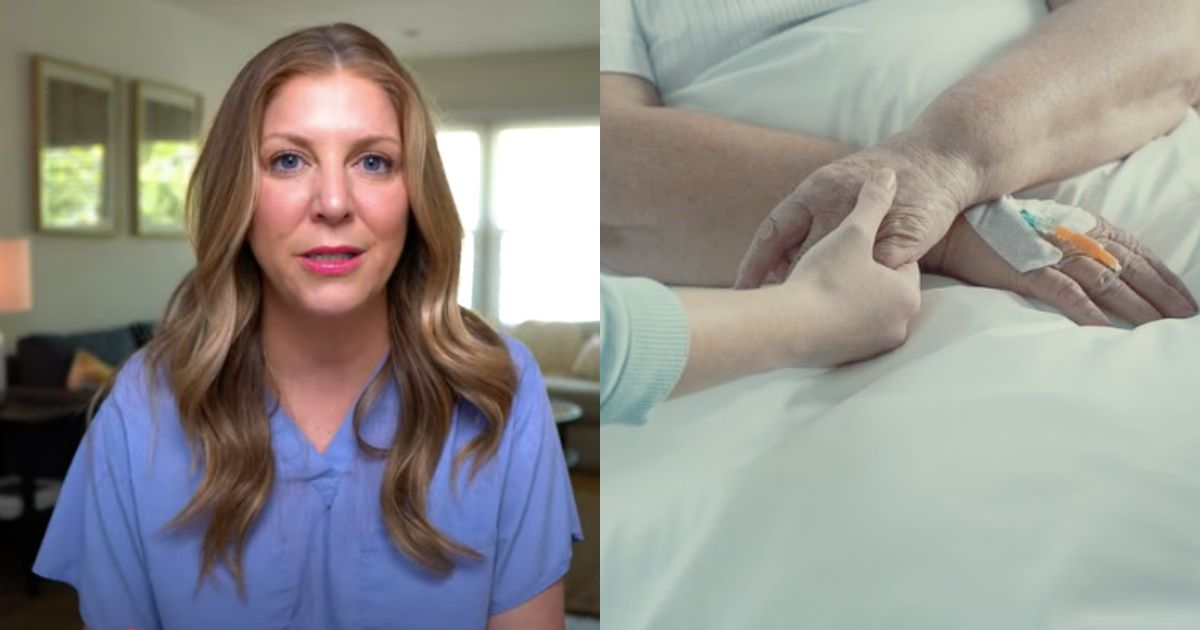Trigger Waning: This article contains graphic videos and details about death.
Ever wondered what happens to the human body after we die? Yes, Hindu scriptures will talk about salvation, and other religions like Christianity have their take on the concept of what happens after death. While the idea lies mainly in a profoundly personal belief, nobody has seen the process of death, sorrow, and the pain of losing a loved one better than people working in the healthcare sector, like doctors and nurses.
In a rare yet interesting instance, Julie McFadden, a veteran intensive care and hospice nurse ( one who comforts people during the last stages of their lives). In the United States, it has taken to YouTube to share honest, educational insights into what happens to the human body after death. With years of experience witnessing death firsthand, she uses her YouTube channel to talk about the most profound universal and inevitable experience that marks the end of a life.
As per a report, Nurse Julie hopes to remove fear and misconceptions surrounding the process. In one of her most-viewed videos, which gained more than 590,000 views, she breaks down the physical changes that occur after death, helping people understand the natural stages of decomposition.
Hypostasis
According to Nurse Julie, the first thing that happens after death is that the body relaxes. This release of muscle tension is part of the early decomposition stage called hypostasis. As the muscles loosen, bodily fluids may be released from the bladder, bowels, nose, eyes, or ears. “That’s why death can get a little messy,” she explained.
Algor Mortis
As we said, everybody’s experience with death is different, and each deceased individual’s body acts differently after it loses its being. The second stage after hypostasis is known as algor mortis, the body’s temperature gradually drops to match its environment here and the cooling may start immediately or take up to two hours.
Body Settles with Gravity
On average, the body loses about 1.5°F per hour. “It really depends on the person,” Julie noted, “but eventually the body cools down completely.” Then the body settles with the gravity as it enters the livor mortis stage, and gravity pulls the blood downward, which can cause purplish discoloration on the body’s underside. “If a person lies on their back after passing, you’ll often see darkened skin on their backside,” she said, describing it as a normal part of the post-death process.
Rigor Mortis
The next stage is called rigor mortis, where, after the body has settled with gravity, the muscles of the corpse stiffen as metabolic processes cease. This typically begins 2–4 hours after death and can last up to 72 hours. Reportedly, Julie said that the body becomes heavy after death. “I’ve witnessed individuals become rigid mere minutes after passing, while others take longer to exhibit this stiffness,” she added.
The Body Can Get Cold
Roughly 12 hours after death, the body becomes noticeably cold, while in layman’s terms, one can describe the feeling as “the soul has left the body.” Scientifically, Nurse Julie explained that this occurs when the body stops producing ATP (adenosine triphosphate), the energy source that fuels cellular functions. “Without ATP, the body can’t regulate its temperature anymore,” she said.
Decomposition and enters Putrefaction
Have you listened to the latest episode of #TheLifeAndDeathPodcast with special guest Hospice Nurse Julie
To listen in full, search ‘Ashgate Hospice’ on your favourite #podcast platform or go to our website: https://t.co/fo2KMGMdgP#AshgateHopsice #HospiceNurseJulie pic.twitter.com/r5rSCMQDM0
— Ashgate Hospice (@Ashgate_Hospice) June 13, 2024
The final stage before the body is taken for its last rites is where the body begins to break down and return to its natural state. It is called putrefaction. This is the process of decay — something that mortuary practices usually prevent the public from seeing. “Though rarely witnessed today, it’s a completely natural part of how the body decomposes,” Nurse Julie said.













